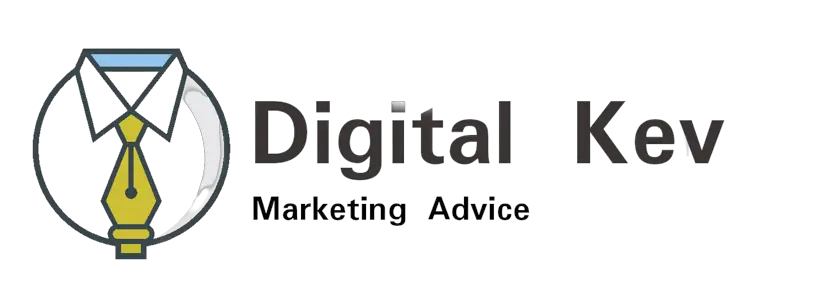Did you know that 74% of users will leave a website if it doesn't load within five seconds? This statistic makes the performance debate between Webflow and Wix even more interesting. Webflow's code efficiency often leads to faster load times and improved SEO, which is essential for keeping visitors engaged. Meanwhile, Wix's user-friendly interface and extensive template library offer a quick and easy setup, catering mainly to those who aren't as tech-savvy. Which platform truly delivers the best balance of ease-of-use and advanced customization? This prompts a deeper look into their key features and target audiences.
Key Takeaways
- Wix offers over 800 designer-made templates and a user-friendly drag-and-drop interface for quick setups.
- Webflow provides advanced design flexibility, custom solutions, and intricate interactions suitable for professional designers.
- Wix is budget-friendly with plans starting from $11/month, while Webflow's pricing starts at $18/month, suiting professional and enterprise use.
- Webflow boasts quicker loading speeds and advanced animation capabilities, improving SEO and user engagement.
- Wix is ideal for individuals and small business owners, whereas Webflow targets developers and professionals needing extensive customization.
Platform Overview

When comparing Webflow and Wix, understanding each platform's core functionalities and user demographics is essential.
Wix, with its user-friendly interface, boasts over 800 designer-made templates, making it ideal for individuals and small businesses looking for quick, easy setups. This template variety allows users to choose from a wide range of pre-designed options, simplifying the design process significantly.
On the other hand, Webflow focuses on offering advanced design flexibility. It enables users to create custom solutions with intricate interactions and animations, making it a preferred choice for complex website structures. Webflow integrates web design and development seamlessly, catering to users who desire more control and creativity over their website's appearance and functionality.
Mobile optimization is another crucial aspect where these platforms differ.
Wix offers a straightforward mobile optimization process, ensuring that sites look good on any device with minimal effort. In contrast, Webflow's approach to mobile responsiveness provides higher flexibility, allowing detailed adjustments for various screen sizes, which is appealing for those who prioritize a flawless mobile experience.
While Wix's user interface is designed for simplicity, Webflow's interface is more robust, catering to users with some technical know-how who aim for custom-designed, visually appealing sites.
Key Features
Exploring the key features of Webflow and Wix reveals significant differences in design flexibility, ease of use, and SEO capabilities.
Webflow stands out with its advanced animation capabilities, enabling users to create stunning visual effects without extensive coding knowledge. This feature is perfect for those who want their websites to stand out visually. The platform also offers unparalleled design flexibility, allowing for a highly customized web design experience that can cater to unique branding needs.
Wix, on the other hand, provides over 800 designer-made template options, making it incredibly easy for users to create professional-looking websites quickly. Its user-friendly drag-and-drop interface is ideal for beginners who've little to no coding experience. You can easily move elements around, making web design intuitive and fast.
When it comes to SEO capabilities, Webflow excels with its clean code, which results in faster load times and consequently improved search engine rankings. Additionally, Webflow offers custom SEO settings and on-page editing features, making it easier for users to optimize their sites effectively.
Pros and Cons

In comparing the pros and cons of Webflow and Wix, it's clear that each platform caters to different user needs and expertise levels. When it comes to design flexibility, Webflow stands out. It allows for advanced interactions and animations without requiring extensive coding knowledge. This makes it an excellent choice for users looking to create complex website structures and custom design solutions. Webflow's clean code and customizable SEO settings contribute to faster load times and better search engine visibility, which are crucial for a successful online presence.
On the other hand, Wix offers over 800 designer templates. This makes it incredibly easy to create a professional-looking website quickly using its user-friendly drag-and-drop interface. However, these templates can pose template limitations when it comes to more intricate customizations. Wix is ideal for beginners and those who need a site up and running with minimal hassle, but users might find themselves constrained by the platform's less flexible design capabilities.
Target Audience
Webflow and Wix cater to distinctly different target audiences, each with its own set of needs and expectations. When conducting market analysis, it becomes clear that Wix is tailored for individuals and small business owners looking to quickly set up a website with minimal support. These target demographics prefer user-friendly interfaces for DIY projects, making Wix a perfect fit for their customer needs. It allows them to create a functional website without needing extensive technical skills.
On the other hand, Webflow targets custom website designers and professionals seeking advanced design solutions. This platform appeals to user preferences that require more complex and visually compelling website structures. Webflow's flexibility and advanced customization capabilities meet the customer needs of those tackling long-term web projects. These target demographics often include professional web designers and businesses needing highly customized digital presences.
Understanding these distinct target audiences helps clarify why Wix is favored for one-off website needs, quickly meeting customer needs with its straightforward setup.
Meanwhile, Webflow excels in satisfying the demands of users looking for advanced design capabilities and longer-term projects. By distinguishing these target demographics and user preferences, the market analysis highlights the best platform for various user needs.
Performance and User Experience

With speed and efficiency at the forefront, Webflow utilizes clean HTML, CSS, and JavaScript to deliver faster loading times and enhance overall user experience. By using optimized code, Webflow reduces page load time, ensuring a smoother and more enjoyable browsing experience. This directly impacts user retention and engagement, which are crucial for any website's success.
Webflow vs Wix in Performance and User Experience:
| Feature | Webflow | Wix |
|---|---|---|
| Loading Speed | Quicker, optimized code | Often slower, heavier |
| Animation Capabilities | Advanced, code-free | Limited, preset options |
| Responsive Design | Streamlined with Flexbox | Customizable but broader |
| Preview Adjustments | Simple device previews | Desktop-first adjustments |
| User Engagement | High due to speed and fluidity | Moderate, more dependent |
Webflow excels in animation capabilities, allowing for sophisticated visual effects without requiring extensive coding skills, which enhances the user experience. The platform's Flexbox feature simplifies responsive design, making mobile and desktop shifts smooth and robust. Webflow's clean code not only speeds up loading times but also indirectly boosts SEO rankings, attracting more visitors and potential conversions.
Content Management and SEO
Shifting from performance to functionality, let's explore how Webflow's robust CMS and extensive SEO settings can elevate your website's content management and search engine visibility.
Webflow's user-friendly CMS interface streamlines content management with simple on-page editing and a minimal dashboard UI, making it easy to maintain content optimization. This intuitive interface allows for efficient workflow, enabling users to quickly edit and update content.
When it comes to SEO efficiency, Webflow excels with customizable SEO settings that offer quick access to on-page SEO elements. Automated meta titles and descriptions for CMS content guarantee that optimization is consistent and less labor-intensive. Additionally, Webflow integrates free SSL certificates on all its sites, enhancing security and trust which are essential for maintaining high search engine rankings.
Webflow's custom SEO fields greatly enhance search engine visibility. These fields allow for fine-tuning of SEO parameters, giving your website a better chance to rank higher in search results.
All these features combined make Webflow not only a powerful tool for content management but also a strategic platform for superior SEO efficiency and effective content optimization, ensuring your website reaches its full potential in search engine visibility.
Pricing

When considering pricing, it's crucial to look beyond just the monthly cost and evaluate the overall value offered by Wix and Webflow. A detailed cost analysis reveals distinct pricing structures tailored to different user needs.
Wix provides a free plan, ideal for testing or personal use, and offers premium plans ranging from $11 to $39 per month. This range of pricing makes Wix more cost-effective for beginners and small businesses who want to create a simple website without requiring advanced customization options.
In contrast, Webflow allows free design and staging until you opt to use a custom domain. Their site plans start at $18 per month and can go up to $49 per month. Additionally, Webflow offers custom pricing options for its Enterprise Solutions, catering to larger organizations that require specific functionalities.
Webflow's pricing reflects its advanced design capabilities and flexibility, making it more appropriate for professional designers and developers who need robust features.
A price comparison indicates that while Wix is more budget-friendly for entry-level users, Webflow's higher cost is justified by its advanced capabilities and scalability. Hence, choosing between Wix and Webflow requires a careful evaluation of both your budget and design needs.
Ease of Use
After evaluating the pricing structures, it's important to weigh the ease of use when choosing between Wix and Webflow. With Wix, you get a highly user-friendly drag-and-drop interface, perfect for beginners without any coding knowledge. Its quick setup process and intuitive interface make it the go-to option for those looking to create websites efficiently. Whether you're an individual or a small business, you'll find Wix's simplicity and ease of use incredibly appealing.
On the other hand, Webflow offers a more complex user interface designed for users with a basic understanding of web design. If you're familiar with HTML and CSS, you'll likely appreciate Webflow's powerful tools. However, this advanced functionality comes with a steeper learning curve.
While Webflow can be incredibly rewarding for developers and designers, it might pose a challenge if you're new to web design.
Customization Ability

Webflow's extensive customization options give users unparalleled control over their website's design and functionality, making it the go-to choice for those who need maximum creative freedom. With Webflow, users can tweak just about any aspect of their site, enabling advanced design flexibility that caters to highly specific needs. Whether it's adjusting colors, layouts, or intricate design elements, Webflow excels in providing the tools necessary to create visually stunning and highly customized websites.
In contrast, Wix offers basic customization options which limit users' abilities to modify their website's design and functionality. These customization limitations mean that while Wix is suitable for beginners or those seeking a straightforward setup, it may not meet the needs of users requiring more complex design flexibility. By offering a more robust and flexible platform, Webflow surpasses Wix when it comes to providing extensive design control.
For anyone with an understanding of web design and a desire to push creative boundaries, Webflow's advanced design capabilities clearly stand out. The customization limitations in Wix might frustrate those looking for more advanced options, making Webflow the preferred platform for extensive and tailored web design projects.
Conclusion
In the end, choosing between Webflow and Wix is like deciding whether you need a Swiss Army knife or a straightforward toolkit.
Webflow is a powerhouse for those craving intricate design and professional-grade tools.
Wix, meanwhile, shines for quick, hassle-free setups perfect for small businesses.
Both have their strengths, but if you need advanced customization, Webflow's your go-to.
For simplicity and speed, Wix can't be beaten.
Choose the platform that best fits your project's needs.

